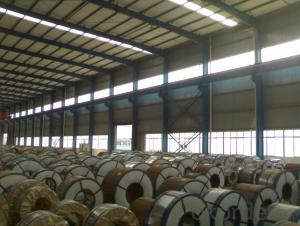Electrolytic Tinplate Coil and Sheets for Food Packing
- Loading Port:
- Tianjin
- Payment Terms:
- TT OR LC
- Min Order Qty:
- 25 m.t
- Supply Capability:
- 7000 m.t/month
OKorder Service Pledge
OKorder Financial Service
You Might Also Like
1.Structure of Electrolytic Tinplate Coil and Sheets for Food Packing Description
Electrolytic Tin Plate Coils and Sheets for Foods Metal Packaging, is one thin steel sheet with a coating of tin applied by electrolytic deposition. Tinplate made by this process is essentially a sandwich in which the central core is strip steel. This core is cleaned in a pickling solution and then fed through tanks containing electrolyte, where tin is deposited on both sides. As the strip passes between high-frequency electric induction coils, it is heated so that the tin coating melts and flows to form a lustrous coat.
2.Main Features of Electrolytic Tinplate Coil and Sheets for Food Packing
Appearance – Electrolytic Tin Plate is characterized by its beautiful metallic luster. Products with various kinds of surface roughness are produced by selecting the surface finish of the substrate steel sheet.
Paintability and printability – Electrolytic Tin Plates have excellent paintability and printability. Printing is beautifully finished using various lacquers and inks.
Formability and strength – Electrolytic Tin Plates have got very good formability and strength. By selecting a proper temper grade, appropriate formability is obtained for different applications as well as the required strength after forming.
Corrosion resistance – Tinplate has got good corrosion resistance. By selecting a proper coating weight, appropriate corrosion resistance is obtained against container contents. Coated items should meet 24 hour 5 % salt spray requirement.
Solderability and weldability – Electrolytic Tin Plates can be joined both by soldering or welding. These properties of tinplate are used for making various types of cans.
Hygienic – Tin coating provides good and non toxic barrier properties to protect food products from impurities, bacteria, moisture, light and odours.
Safe – Tinplate being low weight and high strength makes food cans easy to ship and transport.
Eco friendly – Tinplate offers 100 % recyclability.
Tin is not good for low temperature applications since it changes structure and loses adhesion when exposed to temperatures below – 40 deg C.
3.Electrolytic Tinplate Coil and Sheets for Food Packing Images
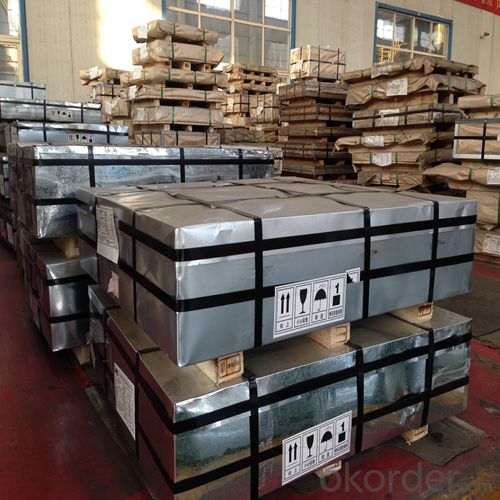
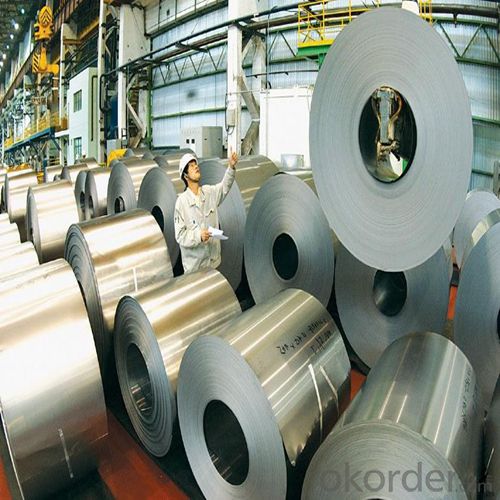
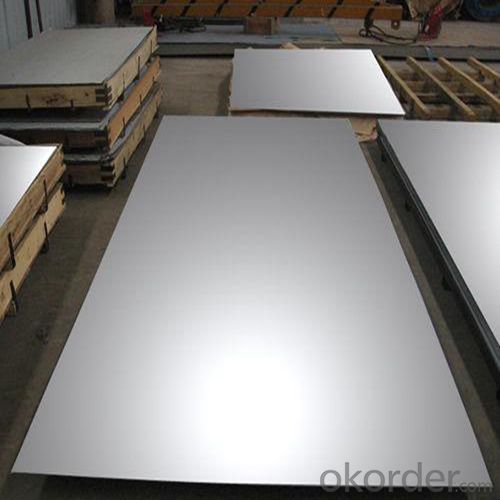
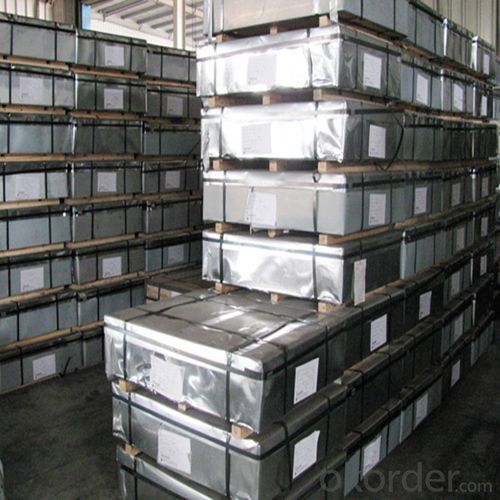
4.Electrolytic Tinplate Coil and Sheets for Food Packing Specification
Standard | ISO 11949 -1995, GB/T2520-2000,JIS G3303,ASTM A623, BS EN 10202
|
Material | MR,SPCC |
Thickness | 0.15mm - 0.50mm |
Width | 600mm -1150mm |
Temper | T1-T5 |
Annealing | BA & CA |
Coil Inner Diameter | 508mm |
Weight | 6-10 tons/coil 1~1.7 tons/sheets bundle |
Passivation | 311 |
Oil | DOS |
Surface | Finish,bright,stone,matte,silver |
5.FAQ of Electrolytic Tinplate Coil and Sheets for Food Packingg
- How are the Electrolytic Tin Plates specified?
The Electrolytic Tin Plates are specified as per the steel base, extent of tempering, the coating weight, annealing method and the surface finish.
- How many types there are for base steels?
The base steels are of three types: Type MR, L, D
- Q:How does tinplate contribute to the circular economy?
- Tinplate contributes to the circular economy by being highly recyclable and reusable. It can be easily collected, sorted, and processed into new products without losing its quality. This reduces the need for virgin materials and saves energy and resources in the production process. Additionally, tinplate's corrosion resistance properties extend the lifespan of products, further minimizing waste and promoting a more sustainable approach to manufacturing.
- Q:What are the weight advantages of using tinplate?
- One of the weight advantages of using tinplate is its lightweight nature. Tinplate is made of thin sheets of steel coated with a layer of tin, which makes it lighter compared to other metal packaging materials. This lightweight feature allows for easier transportation, storage, and handling, reducing overall costs and increasing efficiency in various industries.
- Q:What are the benefits of using tinplate for electrical components?
- Using tinplate for electrical components offers several benefits. Firstly, tinplate is corrosion-resistant, which helps to protect the components from moisture and other environmental factors that could lead to damage or malfunction. Secondly, tinplate has excellent conductivity, ensuring efficient and effective electrical flow within the components. Additionally, tinplate is a lightweight and durable material, making it ideal for use in electrical applications. Furthermore, tinplate is easily recyclable, making it a sustainable choice for manufacturers. Overall, utilizing tinplate for electrical components enhances their performance, longevity, and environmental sustainability.
- Q:What are the advantages of using tinplate?
- Some of the advantages of using tinplate include its high strength and durability, excellent corrosion resistance, and its ability to be easily formed and shaped. Tinplate also provides a barrier against oxygen, moisture, and light, making it ideal for packaging food and beverages. Additionally, tinplate is recyclable, making it a sustainable choice for packaging materials.
- Q:What are the regulations regarding tinplate packaging?
- Tinplate packaging is subject to various regulations, depending on the country and specific product being packaged. These regulations typically cover aspects such as food safety, labeling requirements, and environmental considerations. For example, in the United States, the Food and Drug Administration (FDA) regulates tinplate packaging for food products, ensuring they meet safety standards and are properly labeled. Additionally, there may be specific regulations related to recycling or disposal of tinplate packaging to minimize its impact on the environment. It is essential for businesses to research and comply with the relevant regulations to ensure their tinplate packaging meets all necessary requirements.
- Q:How is tinplate used in the cosmetics industry?
- Tinplate is commonly used in the cosmetics industry for packaging purposes. It is used to create metal containers, such as tin cans or tubes, that house various cosmetic products like creams, lotions, or powders. Tinplate's durability and resistance to corrosion make it an ideal material for ensuring the safety and longevity of cosmetic products. Additionally, its attractive appearance allows for branding and customization options, enhancing the overall appeal of the product.
- Q:What are the different methods of labeling and branding on tinplate packaging?
- There are several methods of labeling and branding on tinplate packaging, including direct printing, lithography, embossing, and labeling with adhesive labels. Direct printing involves printing the design directly onto the tinplate using ink or paint. Lithography is a high-quality printing process that involves transferring the design onto the tinplate using a series of rollers. Embossing creates raised or recessed designs on the tinplate by pressing it with a die. Lastly, labeling with adhesive labels involves applying pre-printed labels onto the tinplate surface.
- Q:How does tinplate contribute to the overall stackability of packaging?
- Tinplate, being a lightweight and durable material, greatly contributes to the overall stackability of packaging. Its rigid structure ensures that the packaging can be safely stacked without collapsing or damaging the contents. This allows for efficient use of storage space and easy transportation, making tinplate an ideal choice for stackable packaging solutions.
- Q:How does tinplate perform in terms of magnetic properties?
- Tinplate is not inherently magnetic, as it is made by coating a thin layer of tin onto steel. However, the steel base of tinplate can retain its magnetic properties.
- Q:What are the common surface coatings for tinplate?
- The common surface coatings for tinplate include lacquer, enamel, organic coatings, and tin-free steel coatings.
1. Manufacturer Overview |
|
|---|---|
| Location | |
| Year Established | |
| Annual Output Value | |
| Main Markets | |
| Company Certifications | |
2. Manufacturer Certificates |
|
|---|---|
| a) Certification Name | |
| Range | |
| Reference | |
| Validity Period | |
3. Manufacturer Capability |
|
|---|---|
| a)Trade Capacity | |
| Nearest Port | |
| Export Percentage | |
| No.of Employees in Trade Department | |
| Language Spoken: | |
| b)Factory Information | |
| Factory Size: | |
| No. of Production Lines | |
| Contract Manufacturing | |
| Product Price Range | |
Send your message to us
Electrolytic Tinplate Coil and Sheets for Food Packing
- Loading Port:
- Tianjin
- Payment Terms:
- TT OR LC
- Min Order Qty:
- 25 m.t
- Supply Capability:
- 7000 m.t/month
OKorder Service Pledge
OKorder Financial Service
Similar products
New products
Hot products
Hot Searches
Related keywords



